
- •Course of lectures «Contemporary Physics: Part1»
- •Figure 4.1. Two particles interact Newton’s third law, we must have F12
- •If a particle is moving in an arbitrary direction, p must have three
- •Using Newton’s second law of motion, we can relate the linear momentum of
- •Using the definition of momentum, Equation 4.1 can be written
- •The momentum of a particle changes if a net force acts on the
- •To evaluate the integral, we need to know how the force varies with
- •The direction of the impulse vector is the same as the direction of
- •Because the force imparting an impulse can generally vary in time, it is
- •We use the term collision to represent an event during which two particles
- •The total momentum of an isolated system just before a collision equals the
- •An inelastic collision is one in which the total kinetic energy of the
- •Figure 4.5 Schematic representation of an elastic head-on collision between two particles: (a)
- •Suppose that the masses and initial velocities of both particles are known.
- •The momentum of a system of two particles is conserved when the system
- •glancing collision
- •If the collision is elastic, we can also use Equation 4.16 (conservation of
- •Figure 4.7 Two particles of unequal mass are connected by a light, rigid
- •Assuming M remains constant for a system of particles, that is, no articles
- •If we now differentiate Equation 4.34 with respect to time, we obtain the
- •Rotation of a Rigid Object About a Fixed Axis
- •Rotation of a Rigid Object About a Fixed Axis
- •The average angular acceleration
- •Direction for angular speed and angular acceleration
- •Rotational Kinematics: Rotational Motion with Constant Angular Acceleration
- •is the angular position of the rigid object
- •If we eliminate t from Equations 5.6 and 5.7, we obtain
- •Table 5.1
- •Angular and Linear Quantities
- •We can relate the angular acceleration of the rotating rigid object to the
- •A point moving in a circular path undergoes a radial acceleration ar of
- •Rotational Kinetic Energy
- •We simplify this expression by defining the quantity in parentheses as the moment
- •Calculation of Moments of Inertia
- •Table 5.2
- •Torque
- •Figure 5.9 The force F1
- •Relationship Between Torque
- •Figure 5.11 A rigid object rotating about an axis through O.
- •Although each mass element of the rigid object may have a different linear
- •Work, Power, and Energy in Rotational Motion
- •The rate at which work is being done by F as theobject rotates
- •That is, the work–kinetic energy theorem for rotational motion states that
- •Table 5.3
- •Rolling Motion of a Rigid Object
- •Figure 5.14 All points on a rolling object move in a direction perpendicular
- •Figure 5.15 The motion of a rolling object can be modeled as a
- •Quiz
- •Quick Quiz 1 A block of mass m is projected across a horizontal

 Course of lectures «Contemporary Physics: Part1»
Course of lectures «Contemporary Physics: Part1» 
Lecture №5
Linear Momentum and Collisions.
Rotation of a Rigid Object about a Fixed Axis.
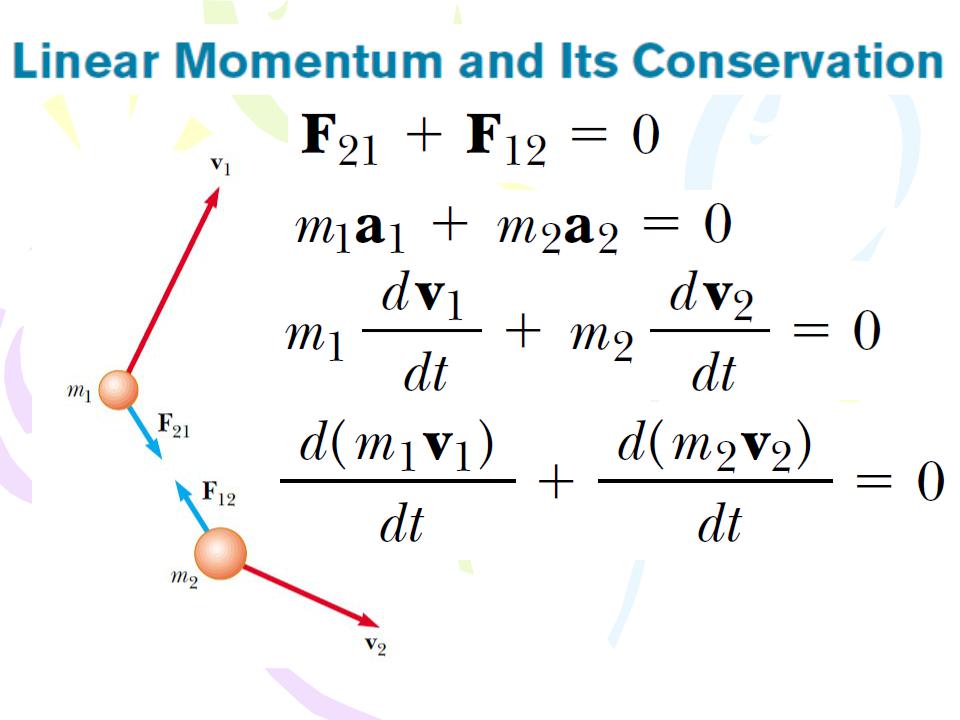
Figure 4.1. Two particles interact Newton’s third law, we must have F12
with each other. According to
= - F21.
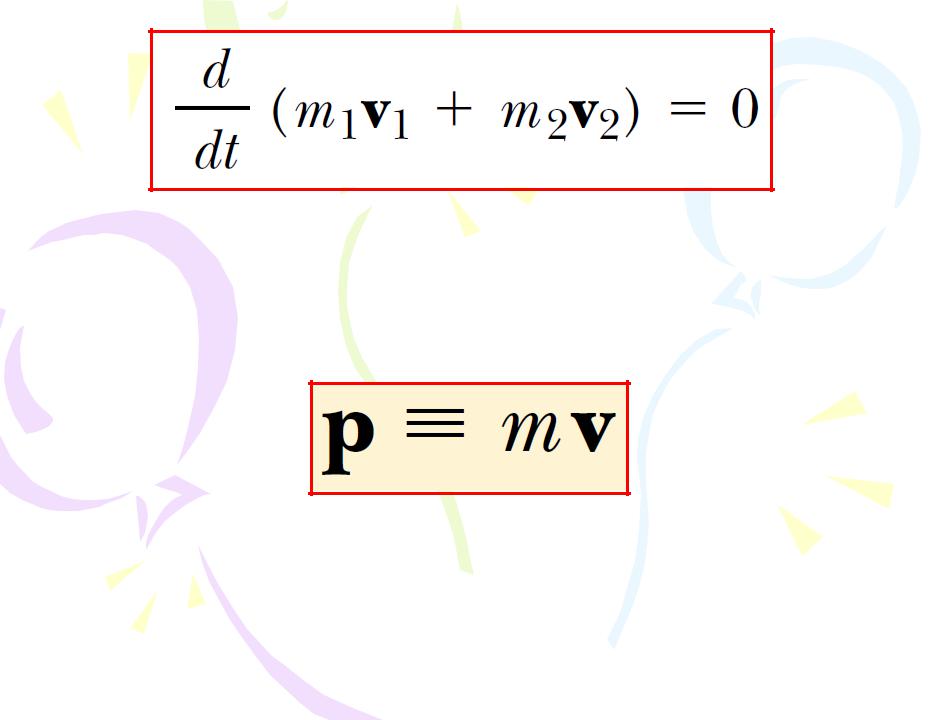
(4.1) |
The linear momentum of a particle or an object that can be modeled as a particle of mass m moving with a velocity v is defined to be the product of the mass and velocity:
(4.2)
Linear momentum is a vector quantity because it equals the product of a scalar quantity m and a vector quantity v. Its direction is along v, it has dimensions ML/T, and its SI unit is kg · m/s.
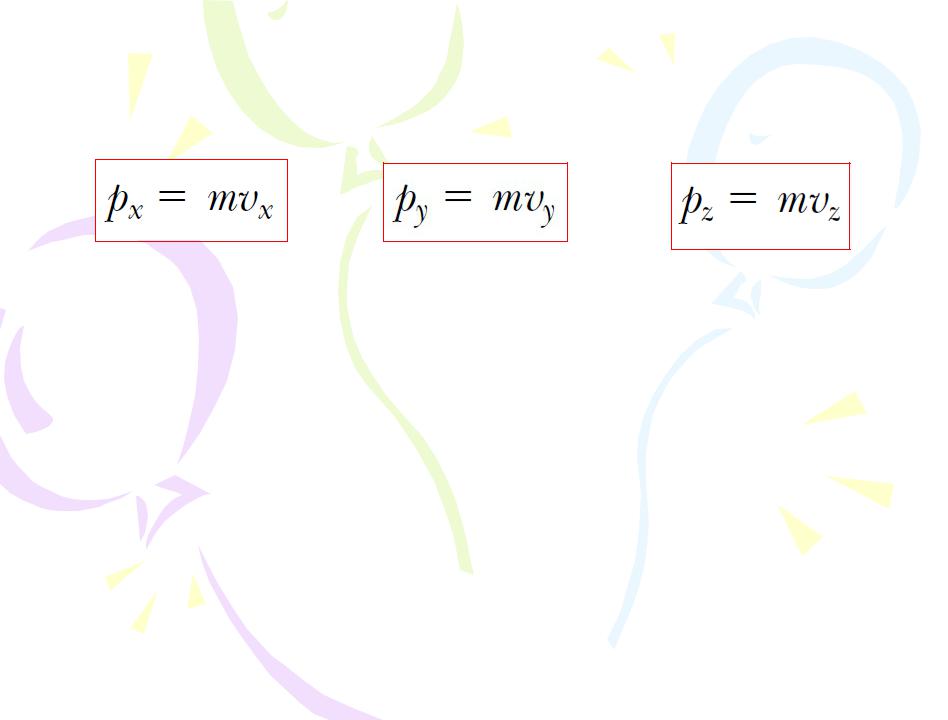
If a particle is moving in an arbitrary direction, p must have  three components
three components 

As you can see from its definition, the concept of momentum provides a quantitative distinction between heavy and light particles moving at the same velocity. For example, the momentum of a bowling ball moving at 10 m/s is much greater than that of a tennis ball moving at the same speed. Newton called the product mv quantity of motion; this is perhaps a more graphic description than our present-day word momentum, which comes from the Latin word for movement.
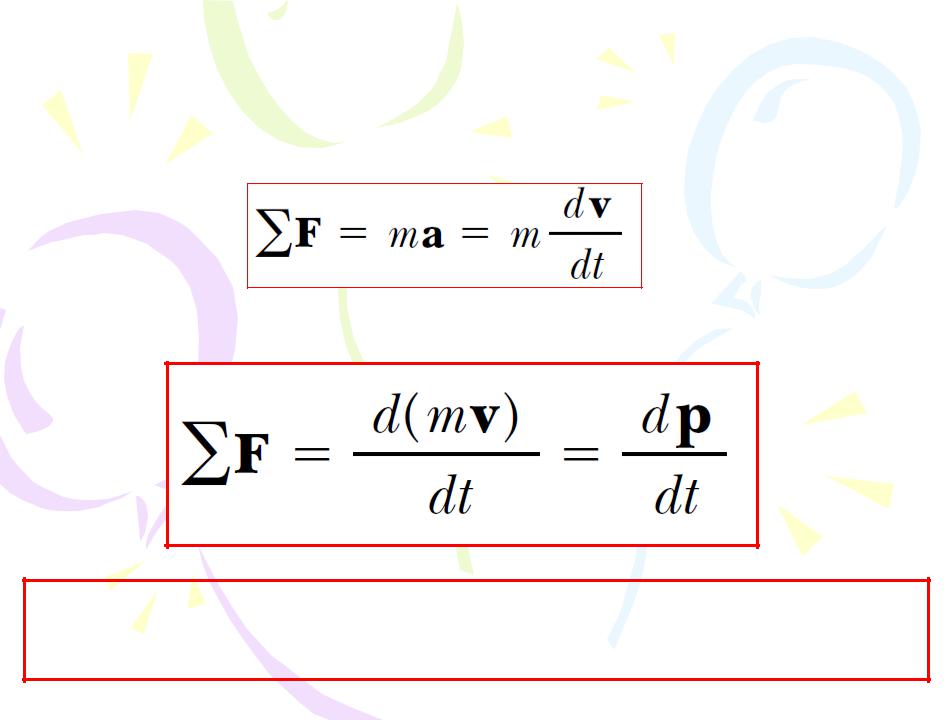
Using Newton’s second law of motion, we can relate the linear momentum of a particle to the resultant force acting on the particle. We start with Newton’s second law and substitute the definition of acceleration: 

As m=const:
(4.3)
The time rate of change of the linear momentum of a particle is equal to the net force acting on the particle.
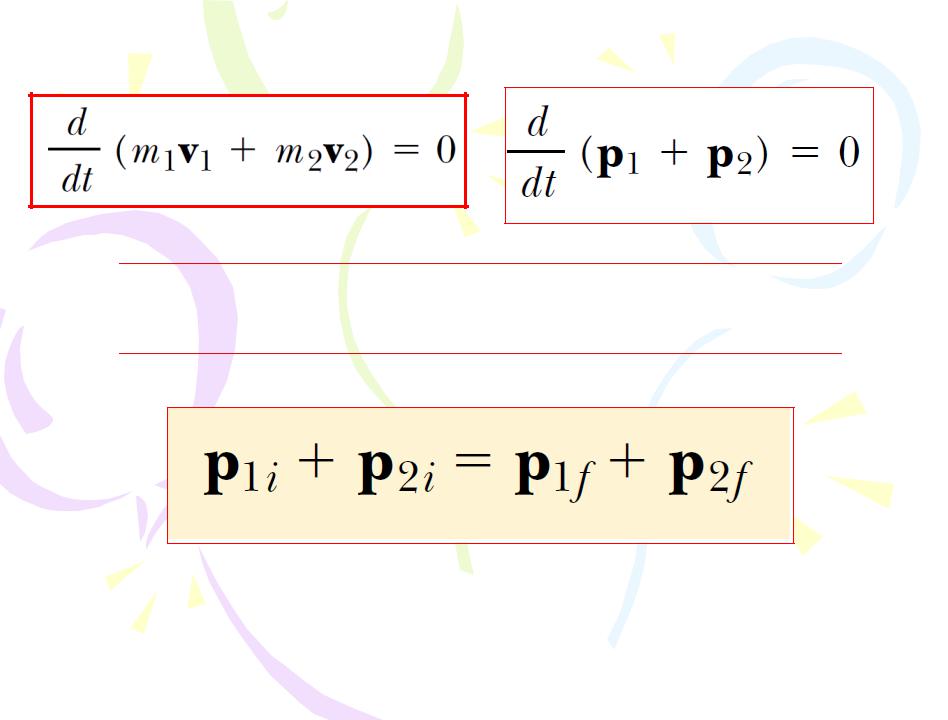
Using the definition of momentum, Equation 4.1 can be written


 (4.4)
(4.4)
(4.5)
where p1i and p2i are the initial values and p1f and p2f the final values
of the momenta for the two particles for the time interval during which the particles interact.

(4.6)
This result, known as the law of conservation of linear momentum, can be extended to any number of particles in an isolated system. It is considered one of the most important laws of mechanics. We can state it as follows:
Whenever two or more particles in an isolated system interact, the total momentum of the system remains constant. 
This law tells us that the total momentum of an isolated system at all times equals its initial momentum.
Notice that we have made no statement concerning the nature of the forces acting on the particles of the system. The only requirement is that the forces must be internal to the system.
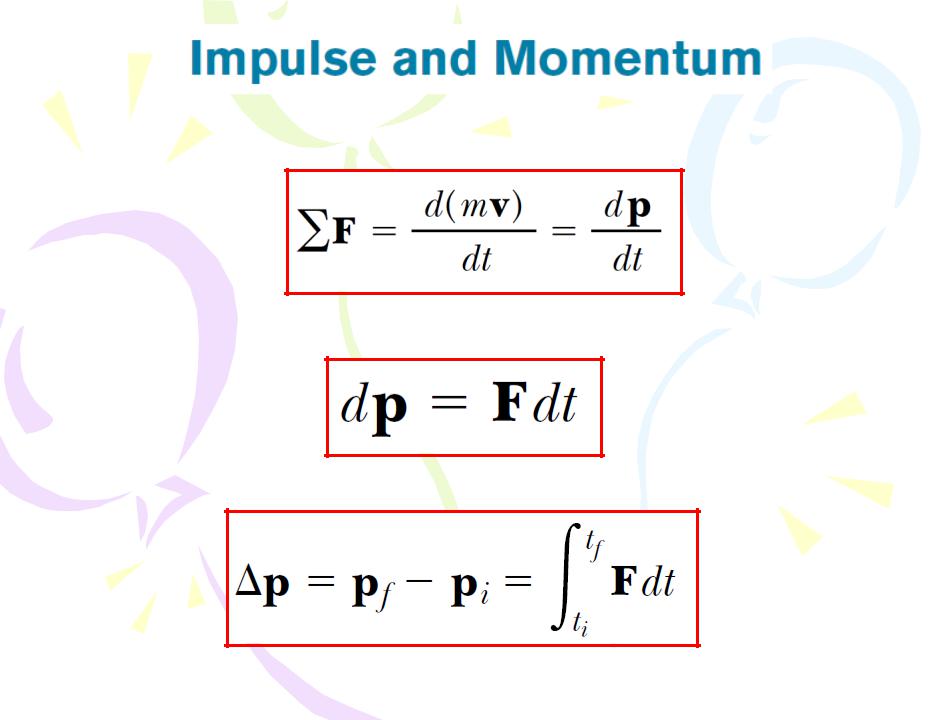
The momentum of a particle changes if a net force acts on the particle.
According to Newton’s second law
(4.7)
(4.8)
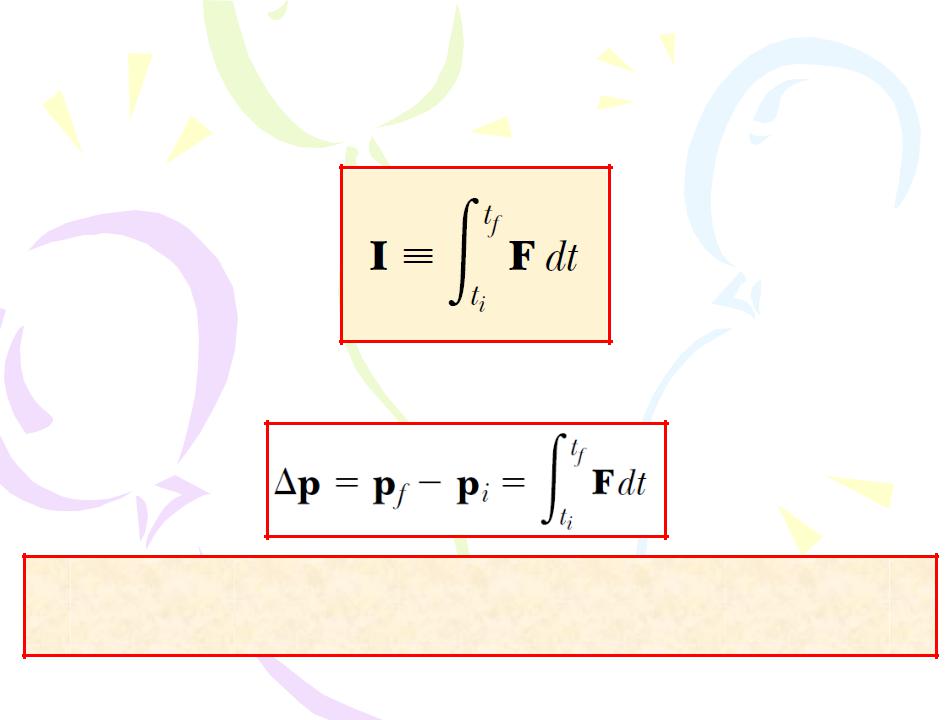
To evaluate the integral, we need to know how the force varies with time. The quantity on the right side of this equation is called the impulse of the force F acting on a particle over the time interval ∆t=tf
- ti. Impulse is a vector defined by
(4.9)
Equation 4.8 is an important statement known as the impulse– momentum theorem: 
The impulse of the force F acting on a particle equals the change in the momentum of the particle.
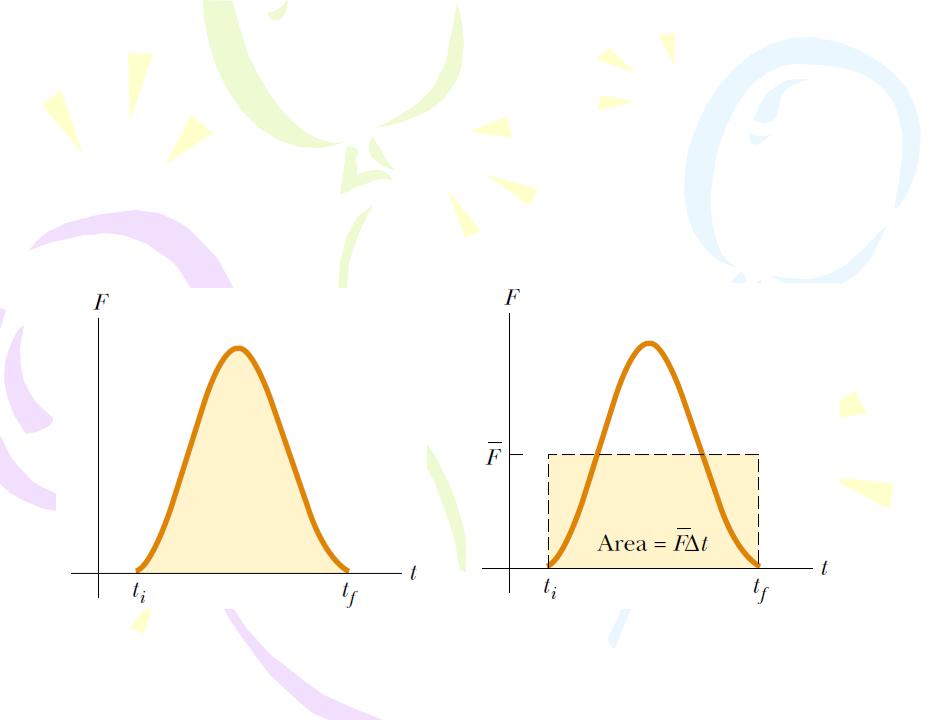
The direction of the impulse vector is the same as the direction of the change in momentum. Impulse has the dimensions of momentum— that is, ML/T. Note that impulse is not a property of a particle; rather, it is a measure of the degree to which an external force changes the momentum of the particle. Therefore, when we say that an impulse is given to a particle, we mean that momentum is transferred from an external agent to that particle.
(a) |
(b) |
Figure 4.2 (a) A force acting on a particle may vary in time. The impulse imparted to the particle by the force is the area under the force-versus-time curve. (b) In the time interval (t, the time- averaged force (horizontal dashed line) gives the same impulse to a particle as does the time- varying force described in part (a).
